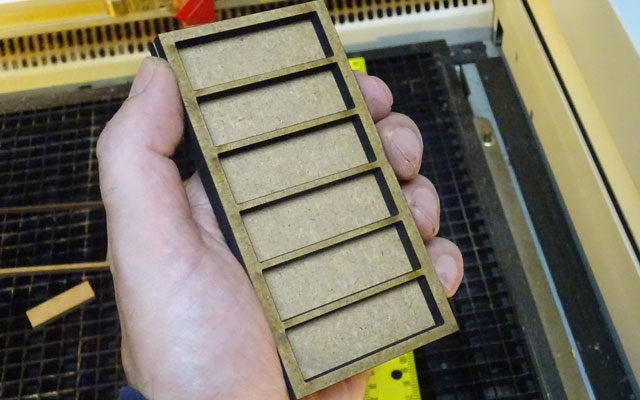Custom MDF Jig: CNC Laser Cutting
CNCROi.com makes jigs of all sizes, materials and shapes. Today, we’ll see how we made a small jig for a custom stainless steel annealing job we have.
As this is for a customer project, I can’t show you what goes into this but here’s a video showing you what annealing is like on stainless steel.
Annealing using our fiber laser source is a very slow but permanent process. As a result, even though this jig is small, the units that go inside of it won’t be changed that often so a small jig in this case is more efficient.

The two holes you see on the right of the photo are actually tests as this jig is made to fit a specific product, you want a snug but not tight fit so that the units are easy to remove but accurate enough so that they don’t wiggle around in their laser cut space in this custom jig.
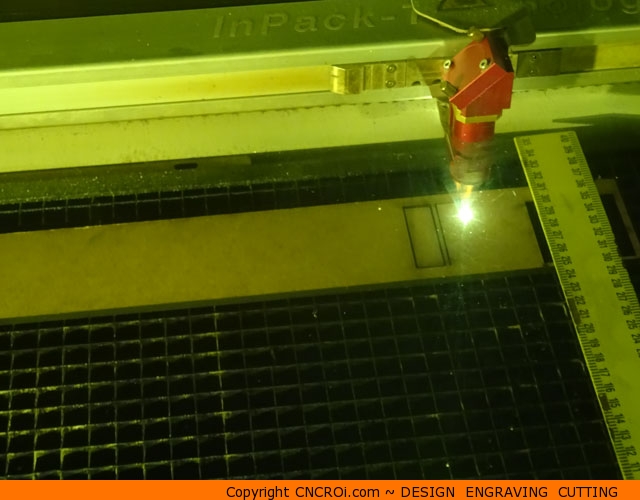
The reason why MDF was used for this jig instead of acrylic is due to the fact that this is made to hold a product made out of solid 304 stainless steel and it WILL GET VERY HOT as it has extensive annealing. Using acrylic for this custom jig would literally melt the product into the plastic while MDF does well even with hot items.
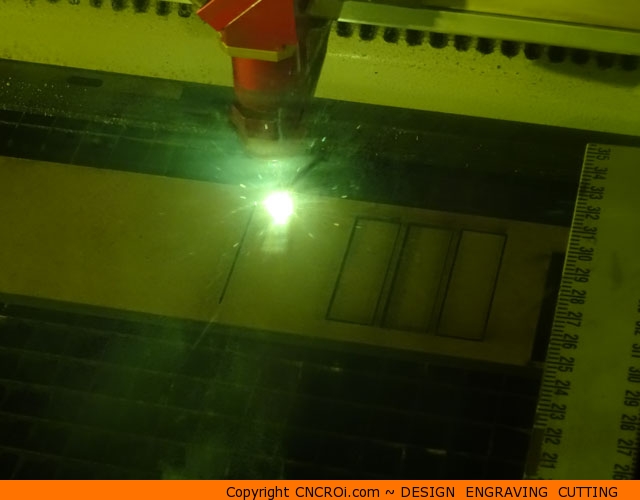
This is also a “temporary jig” meaning after the job is done, this will be thrown out and when the next production cycle begins again in a month, we’ll just cut a new one. This may sound wasteful but after repeated heating and cooling, even MDF tends to warp and the humidity level may be different in a month from now anyhow so the jig would be inaccurate.
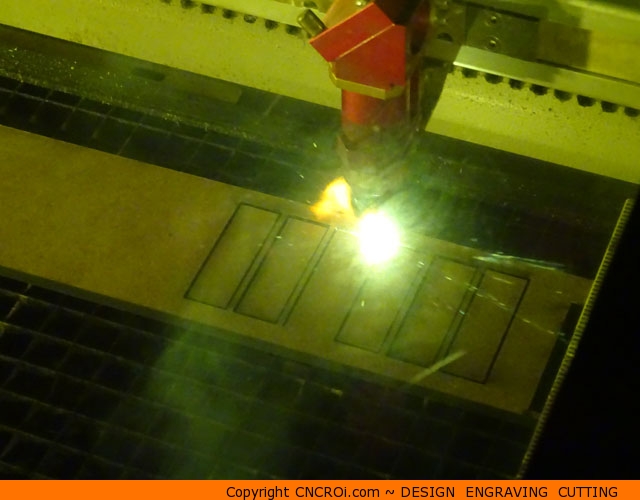
Overall, for this specific customer project, there is no need to make a jig with hundreds or thousands of units at once as the annealing process is so slow, doing a few at a time and switching things over is more efficient. Sometimes we do projects where the process is dramatically faster, in those cases, making a jig holding more units make sense. As such, jigs are optimized to the specific project at hand.
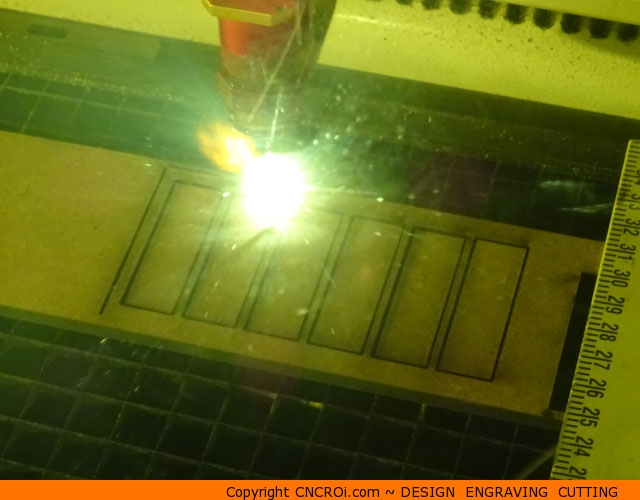
Here’s another example of a custom jig, this time, out of 1/8th inch or 3 mm white acrylic for annealing dog tags, as there isn’t significant annealing on the surface happening compared to this client project, acrylic was fine.
We also make jigs with only one layer, it depends on the customer’s spec. In this case, it’s a two layer custom MDF jig as the units need to remain flat and it’s more efficient to slide these products out and back in between production cycles.
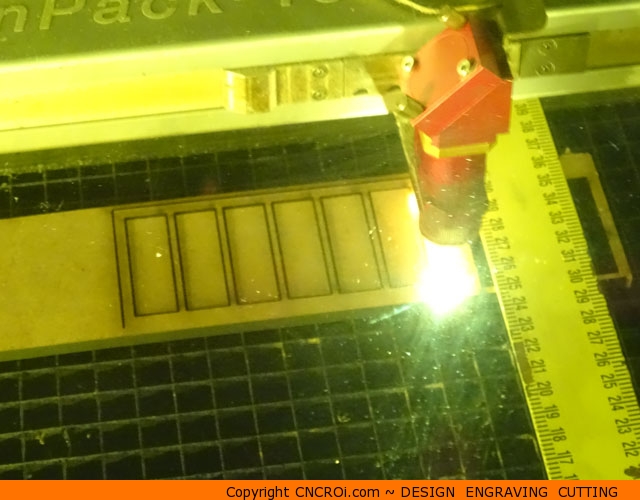
Cutting out the inside parts before the outside parts on this custom MDF jig makes sure everything is placed accurately with no movement during the jig production process, which is important if you want to do a project using said jig.

After the top part of the jig is cut, our Austrian CNC laser goes ahead and cuts out the bottom part of this jig, the two parts will then be glued together. Although there are many ways to hold jigs together, for this specific project, just glue is fine.
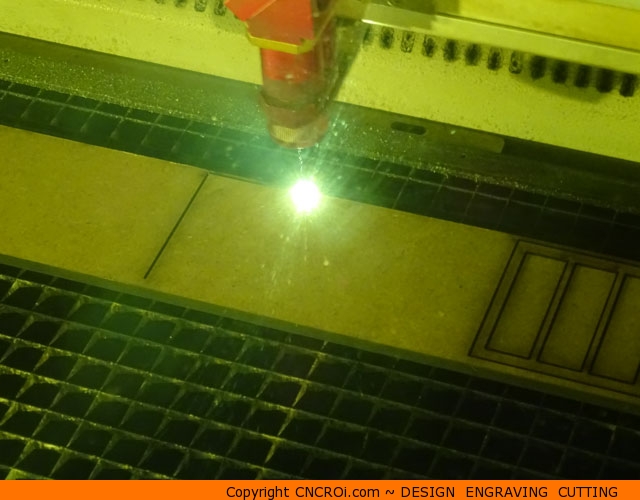
There is no masking on these parts as smoke stains don’t matter, this is for internal use AND just a jig that goes in a machine.

Here are the two parts, they have identical outlines so sticking them together makes a perfect fit all around.

Here’s what this custom MDF jig looks like after the top is put onto the bottom, quarter-inch or 6 mm material was used as the product that will go into these holes is rather high and this keeps things together throughout the non-contact annealing process.
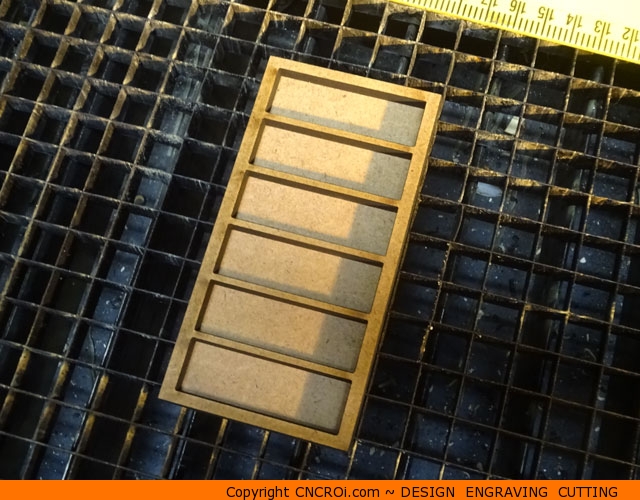
And here’s a custom name badge jig we use quite a bit in the shop. Again, depending on the application, unit count, value of the product we are inserting and production times, the jigs we make are big or smaller.
Here’s the finished glued-up custom MDF jig. Focus here isn’t to make something pretty but functional, though it still looks pretty cool.
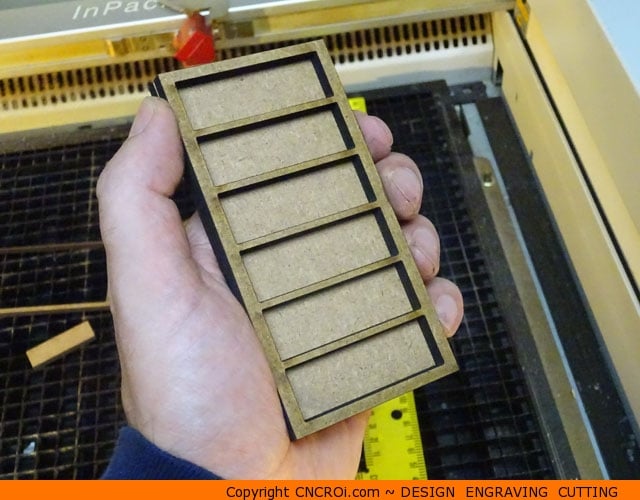
Although not the most exciting thing in the world, here’s a video of a custom jig in action! This is the custom acrylic jig you saw the production of higher up in this blog post.
Need a custom jig? Contact CNCROi.com right now and you’ll get your custom designed and produced jig. Have lots of units of something that needs marking, etching, cutting or annealing? Contact CNCROi.com and we can do that for you too!

